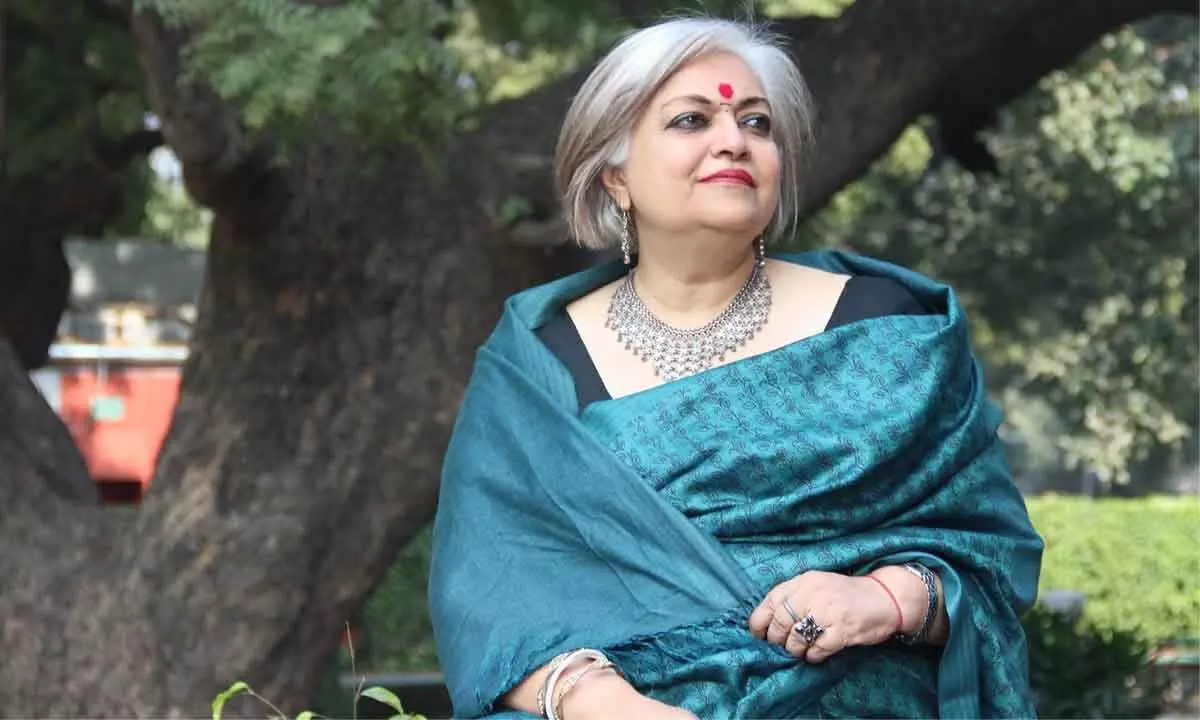Live
- Public Participation Key to Strengthening Democracy-Annamalai
- MLA Anirudh Reddy gets threat letter from Maoist
- "Awareness Program on Road Safety for Auto Drivers Held in Aija Town".
- MLA Bandla Krishna Mohan Reddy Inaugurates NPL Season-4 Cricket Tournament in Netivanipalli
- Rangoli Competitions Showcase Tradition and Creativity in Gadwal.
- "Vadde Obanna: A Revolutionary Hero’s Legacy Celebrated on His 218th Birth Anniversary".
- District Administration Accelerates Implementation of Welfare Schemes.
- Illegal Transportation of Gravel and Soil in Sankalmaddi Village Raises Concerns
- Weavers Celebrate Telangana CM Revanth Reddy’s Welfare Initiatives with Milk Ablution in Aiza.
- MLA Couple Attends Oath-Taking Ceremony of New Governing Body at Shri Shri Jamulamma Parashurama temple in Jammi chedu.
Just In
Bihar Museum Biennale aims to transform the museum into a vibrant, interactive and experiential space: Alka Pande

While the first edition of Bihar Museum Biennale (BMB) began as a virtual one in 2021, raising crucial concerns about museums: display, content, merchandising, scenography and technology challenges, the forthcoming BMB II, scheduled to open on August 7, aims to explore future possibilities, turning museums into dynamic spaces for engaging people of all ages
While the first edition of Bihar Museum Biennale (BMB) began as a virtual one in 2021, raising crucial concerns about museums: display, content, merchandising, scenography and technology challenges, the forthcoming BMB II, scheduled to open on August 7, aims to explore future possibilities, turning museums into dynamic spaces for engaging people of all ages.
“The goal of the museum biennale is to transform the museum into a vibrant, interactive and experiential space. We don’t want visitors to simply observe objects and artifacts of the past; we want them to gain insight into the present and their origins through direct exchanges with art objects. We want the Bihar Museum as well as the biennale to create an ecosystem where people share experiences and emotions,” Alka Pande, Chief Curator and Artistic Producer of BMB, tells.
Conceived by Anjani Kumar Singh, the Director General of Bihar Museum in Patna considering Bihar has been at the forefront of museums in post-independent India, Pande recalls the conversation when she suggested a major event related to the concerns of museums.
“I simply loved the idea and we decided to do the BMB, which is arguably is the first museum biennale in the world,” says the recipient of the Knight of the Order of Arts and Letters.
Talk to Pande about the fact that that Bihar Museum is perhaps the best public museum created in post-independent India and she says the vision is to create a museum that goes beyond lofty ideas and high art.
Stressing that even those unfamiliar with Bihar’s wonders will feel connected to the living ecosystem it represents, she adds that the aim is to make the museum a captivating and inclusive space that invites everyone to be a part of this enriching journey.
Considering the fact that museums have traditionally been perceived as spaces of antiquities, the curator says the team’s vision at BMB is to reimagine them as dynamic and experiential institutions and envision future museums as laboratories of ideas, places that generate knowledge systems, and foster cultural exchange.
“At BMB, we strive to create a space where culture comes alive, and meaningful dialogues between objects and viewers occur,” says this consultant art advisor and curator of the Visual Arts Gallery at the India Habitat Centre in the national capital.
Instead of being static repositories of artifacts, they aim to transform museums into immersive experiences. Through interactive exhibits, multimedia presentations, and engaging activities, the effort is to precipitate visitors to actively participate in the journey of discovery.
“We believe that museums should be more than just a place to observe; they should be catalysts for learning and inspiration,” adds Pande, whose major fields of interest are gender identity and sexuality, and traditional arts.
Mention the sorry state of most public museums in the country -- lacking interesting programming, and displays and a certain aversion to involving the community at large unlike their counterparts abroad, and she opines that in order to reverse the same, increased financial support from the government and private donors is crucial and that investing in training and development for museum professionals can also elevate the quality of exhibits and programs.
“Furthermore, streamlining administrative processes and adopting a more progressive approach to museum management can foster a culture of innovation and community involvement. By recognising the potential of museums as educational and cultural hubs, India can take significant strides towards enhancing its public museums and providing enriching experiences for its citizens and visitors alike.”
This edition offers programming, featuring not only Indian museums and independent artists but also contributions from various countries, including Nepal, Russia, Israel, Costa Rica and Panama.
“We have joined hands with Indian museums -- The CSMVS is showcasing a rich tapestry of Tanjore art paintings and Salar Jung Museum is highlighting the culture of Telangana through contemporary artworks. In addition, we have the Kiran Nadar Museum of Art as our knowledge partner, with whom we have designed an outreach plan that aims to enhance the scope of public accessibility to art and museum culture through the tool of engagement and interaction,” says the art curator and writer, who is currently working on a set of 14 books portraying the history of India’s rich visual culture through 108 portraits.
“These books take an incisive look into India’s rich cultural repository of cultural identity, heritage and craftsmanship through the lens of craft, objects, architecture, dance, indigenous art, vernacular etc.,” she concludes.

© 2025 Hyderabad Media House Limited/The Hans India. All rights reserved. Powered by hocalwire.com






